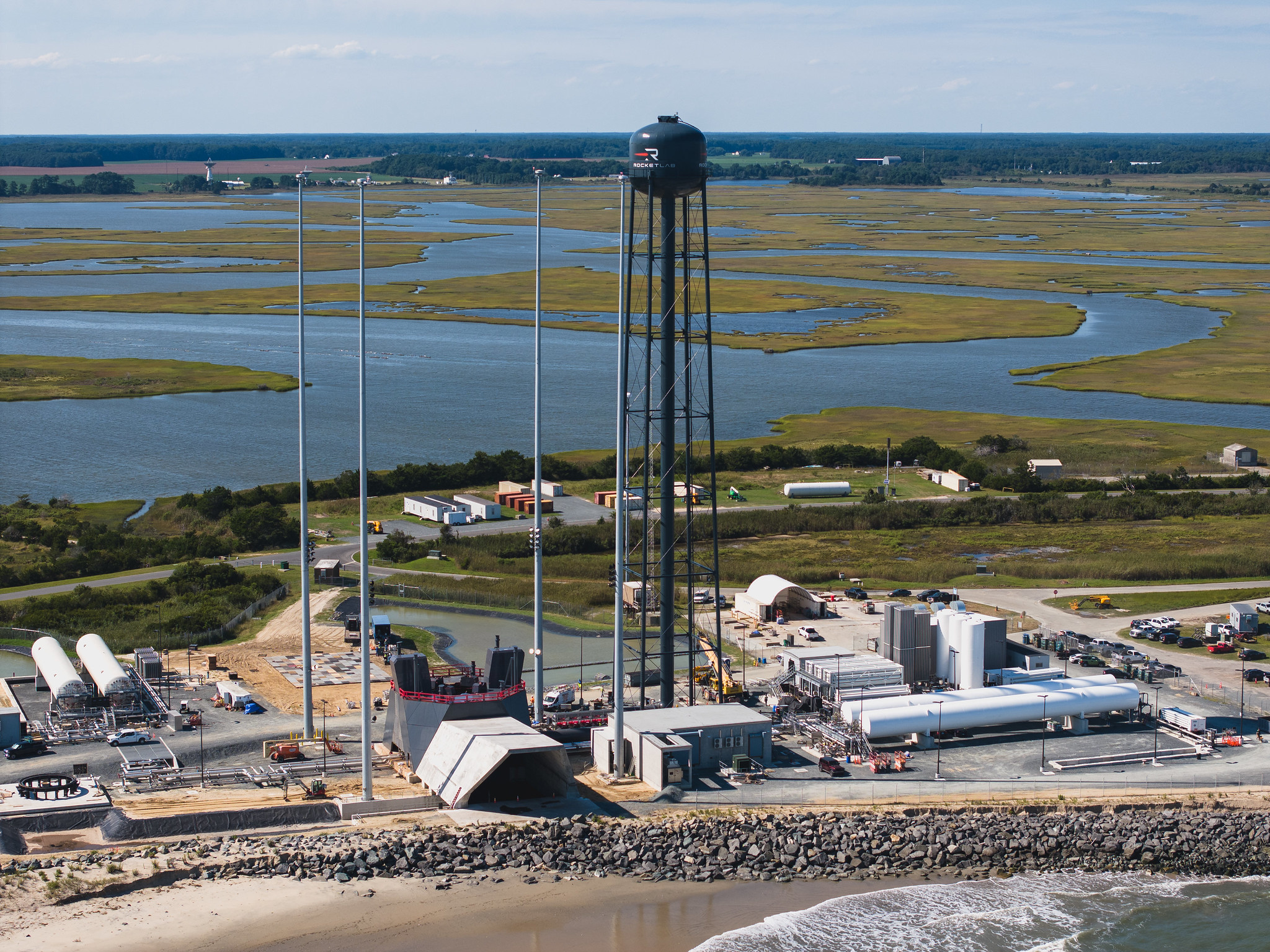
In a week marked by declines in the S&P 500, one outlier emerged: space infrastructure provider Rocket Lab (RKLB), which defied broader market trends to close 9.5% higher on Friday. This performance was underpinned by strategic developments that warrant closer examination.
The Emergence of LC-3: A New Chapter for Rocket Lab
On August 28, Rocket Lab officially inaugurated its third launch complex, LC-3, located at the Mid-Atlantic Regional Spaceport on Wallops Island, Virginia. This facility is poised to serve as the operational hub for Neutron, the company’s next-generation rocket designed to carry payloads up to 13 metric tons to low Earth orbit. Standing at 141 feet tall and powered by methane and liquid oxygen, Neutron represents a significant leap forward in capability-offering 43 times the payload capacity of Rocket Lab’s current workhorse, Electron.
While the Neutron program has been public knowledge since CEO Sir Peter Beck’s announcement four years ago, recent developments have unveiled several nuances with potential material implications for investors.
MARS and Beyond: Expanding Horizons
LC-3’s location at the Mid-Atlantic Regional Spaceport-aptly abbreviated as “MARS”-is not merely coincidental. As Governor Glenn Youngkin highlighted during the ribbon-cutting ceremony, larger rockets like Neutron enable missions to distant destinations, including Mars. Rocket Lab already possesses two satellites ready for deployment as part of the ESCAPADE mission, a collaboration with NASA and the University of California Berkeley’s Space Science Laboratory. However, delays in securing rideshare opportunities with competitors such as SpaceX’s Falcon Heavy and Blue Origin’s New Glenn have stalled progress.
- Neutron could mitigate reliance on external launch providers, enhancing operational autonomy.
- Success in interplanetary missions would diversify revenue streams beyond Earth-orbit applications.
Competing in Commercial Resupply: A Strategic Pivot
Beyond constellation deployments, Rocket Lab appears to be positioning Neutron for participation in the commercial resupply services (CRS) market-a domain currently dominated by SpaceX and Northrop Grumman. While the International Space Station remains the primary client requiring regular resupply missions, NASA has signaled openness to expanding its roster of approved contractors.
- Sierra Nevada Corporation secured a CRS contract in 2016 but has yet to execute a mission, creating a potential opening for Rocket Lab.
- Entry into this segment could drive recurring revenue through long-term government contracts.
However, execution risks remain pronounced. Developing human-rated cargo modules demands substantial capital allocation and rigorous regulatory compliance, both of which could strain resources.
Toward Human Spaceflight: Ambition Meets Uncertainty
Perhaps the most intriguing revelation from the LC-3 event was Rocket Lab’s aspiration to enter the human spaceflight arena. Though details remain sparse, references to eventual crewed missions suggest the company may seek to compete with SpaceX’s Crew Dragon and Boeing’s Starliner programs. Such an endeavor introduces considerable complexity:
- Achieving human-rated certification requires extensive testing and validation, potentially extending timelines.
- Market dynamics are uncertain, given existing players’ entrenched positions and NASA’s evolving procurement strategies.
If successful, however, this pivot could unlock lucrative opportunities across various sectors, including orbital tourism, lunar exploration, and even Mars colonization efforts.
Conclusion: Navigating Uncertainty with Caution
Rocket Lab’s LC-3 inauguration underscores its ambition to scale operations and diversify its portfolio. While these initiatives present compelling growth prospects, they also introduce notable execution and financial risks. Investors should closely monitor:
- The timeline and budget adherence for Neutron’s development and inaugural flight.
- Potential partnerships or contracts that validate the company’s expanded capabilities.
- Regulatory approvals necessary for high-stakes endeavors such as human spaceflight.
Ultimately, while Rocket Lab’s vision aligns with macro trends favoring increased privatization of space infrastructure, realizing this vision will depend on disciplined capital allocation and operational excellence. 🚀
Read More
- Crypto’s Broken Heart: Why ADA Falls While Midnight Rises 🚀
- Bitcoin Guy in the Slammer?! 😲
- When Markets Dance, Do You Waltz or Flee?
- VOO vs. VOOG: A Tale of Two ETFs
- The Most Anticipated Anime of 2026
- ‘Zootopia 2’ Smashes Box Office Records and Tops a Milestone Once Held by Titanic
- Actors With Zero Major Scandals Over 25+ Years
- Gold Rate Forecast
- Crypto Rollercoaster: XRP ETFs Take a Breather, but Investors Keep Calm and Carry On
- Actresses Who Frequently Work With Their Partners
2025-09-01 18:13